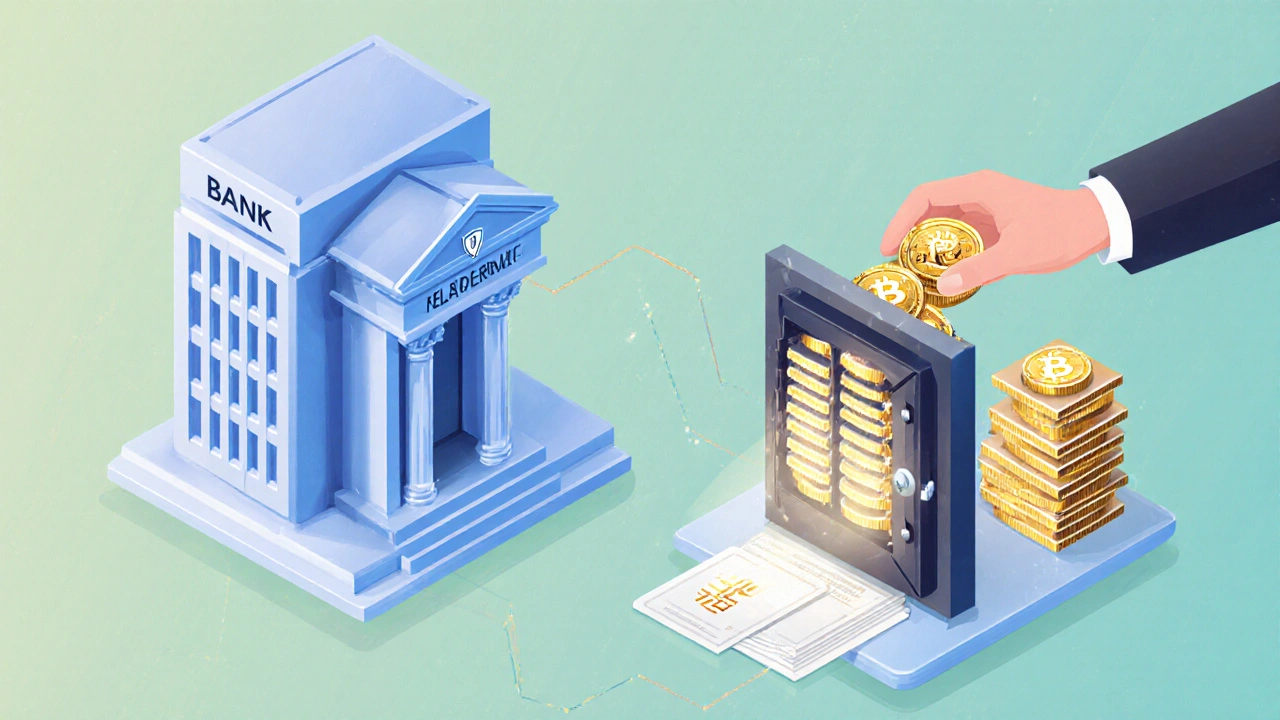Want to dip your toes into crypto without juggling private keys, wallets, and exchange hacks? Crypto ETFs let you trade a basket of digital assets just like a stock, all on a regulated exchange. This guide breaks down what a crypto ETF actually is, how it’s built, the benefits and pitfalls, and the steps you need to invest wisely.
Quick Takeaways
- A crypto ETF packages multiple cryptocurrencies into a single, exchange‑traded security.
- It follows the same creation/redemption model that traditional ETFs use.
- Investors get market exposure, lower custody risk, and easier tax reporting.
- Tracking error and regulatory uncertainty are the main downsides.
- Buying is as simple as placing a trade through a broker that offers the fund.
What Is a Crypto ETF?
When you first hear the term, you might picture a Bitcoin‑only fund. In reality, a Crypto ETF is an exchange‑traded fund that holds a portfolio of cryptocurrencies or crypto‑related assets. It functions like any other Exchange‑Traded Fund (ETF) is a regulated investment vehicle that trades on stock exchanges and tracks an underlying index or asset class. The key difference is the underlying basket - instead of stocks or bonds, it tracks digital coins.
How Does the Creation/Redemption Process Work?
The engine that keeps an ETF’s price close to its net asset value (Net Asset Value (NAV) is the total market value of the fund’s holdings divided by the number of shares outstanding) is the creation/redemption mechanism. Authorized Participants (usually large banks) deposit a block of the underlying Cryptocurrency is a digital asset that uses cryptography for secure transactions and verification into a custodian. In return, they receive a creation unit - a large block of ETF shares. When demand drops, the reverse happens: the participant trades the ETF shares back to the fund and receives the underlying crypto.
What’s Inside a Crypto ETF? The Role of the Index Fund
Most crypto ETFs track an Index Fund is a passive investment vehicle that mirrors the performance of a specific market index built for digital assets. For example, the “Crypto 10 Index” might weight Bitcoin, Ethereum, Solana, and six other coins by market cap. The fund’s prospectus lists the Underlying Assets is the specific cryptocurrencies held by the ETF, such as BTC, ETH, or tokenized futures contracts and their allocation percentages. This transparency helps investors gauge exposure and risk.

Benefits of Using a Crypto ETF
1. **Ease of Access** - You buy and sell shares through a regular brokerage, no need for a separate crypto exchange.
2. **Custody Safety** - The fund’s custodian holds the crypto in cold storage, reducing the chance of hacks.
3. **Tax Simplicity** - In most jurisdictions, capital gains are reported at the share level, not each token.
4. **Diversification** - One share can give you exposure to a basket of coins, smoothing out volatility.
5. **Liquidity** - ETF shares are market‑made, often more liquid than thinly traded individual crypto pairs.
Risks and Downsides to Watch
Even though a crypto ETF feels like a “safer” route, it still carries unique risks:
- Tracking Error - The ETF’s price may drift from the actual crypto market because of fees, imperfect replication, or delays in rebalancing.
- Regulatory Uncertainty - Regulatory Authority is governmental bodies that oversee securities, such as the SEC in the United States or the FCA in the United Kingdom could impose new rules that affect the fund’s structure or even force it to shut down.
- Custodian Risk - While custody is safer than self‑storage, a breach at the custodian could still result in loss.
- Fee Drag - Management fees (typically 0.5‑1% annually) eat into returns, especially in a market that already has high volatility.
How to Invest in a Crypto ETF
Step‑by‑step, here’s what you need to do:
- Open a brokerage account that offers ETFs. Major platforms like Fidelity, Charles Schwab, and Interactive Brokers list crypto ETFs in the US; European brokers such as DEGIRO and Saxo Bank have equivalents.
- Check the fund’s ticker (e.g.,"BTF" for a Bitcoin‑focused ETF) and read the prospectus for holdings, fees, and regulatory jurisdiction.
- Decide how much capital you want to allocate. Remember, ETFs trade in whole shares, so your minimum investment is the share price plus any commission.
- Place a market or limit order through your broker’s trading interface.
- Monitor the fund’s NAV and tracking error regularly. If the spread widens too much, you might consider an alternative product.

Crypto ETF vs. Direct Crypto Holding: Quick Comparison
| Aspect | Crypto ETF | Direct Crypto |
|---|---|---|
| Custody | Professional custodian, cold‑storage | Self‑managed wallets, higher hack risk |
| Liquidity | Exchange‑listed, tight spreads | Depends on exchange depth, can be illiquid |
| Regulation | Subject to securities law, oversight | Mostly unregulated, jurisdiction‑specific |
| Tax Reporting | Single line item per share sale | Each token sale may trigger separate event |
| Fees | Management fee (0.5‑1% yr) | Exchange fees, network gas costs |
| Diversification | Built‑in basket of assets | Must buy multiple tokens manually |
Future Outlook: What’s Next for Crypto ETFs?
Regulators are warming up to the idea. In 2024 the SEC approved the first US‑listed Bitcoin ETF, and by 2025 several multi‑crypto ETFs have launched in Europe and Asia. Expect more offerings that include decentralized finance (DeFi) tokens, tokenized commodities, and even exposure to layer‑2 scaling solutions. As institutional money flows in, NAVs will tighten and tracking error should shrink, making crypto ETFs an increasingly viable bridge between traditional finance and the digital asset world.
Frequently Asked Questions
Can I lose my money in a crypto ETF?
Yes. While the custodian holds the assets securely, the ETF’s value still follows the price of the underlying cryptocurrencies, which can be highly volatile.
Do crypto ETFs pay dividends?
Generally no. Most crypto ETFs are pure price‑tracking funds, so any income would come from token staking rewards, which are usually reinvested rather than paid out.
Are crypto ETFs taxed like stocks?
In many jurisdictions, yes. Gains are treated as capital gains on the sale of ETF shares, simplifying tax reporting compared to tracking each individual token.
Which crypto ETF has the lowest expense ratio?
As of late 2025, the “Diversified Crypto Index ETF (DCI)” in Europe offers a 0.45% annual expense ratio, slightly lower than most US‑listed counterparts.
Can I short a crypto ETF?
Yes, if your broker supports margin trading on that specific ticker. Shorting lets you profit from a price decline but adds additional risk.
What’s the difference between a crypto ETF and a tokenized ETF?
A tokenized ETF issues blockchain‑based tokens that represent shares of a traditional ETF, while a crypto ETF is a regulated security that directly holds crypto assets and trades on a stock exchange.

